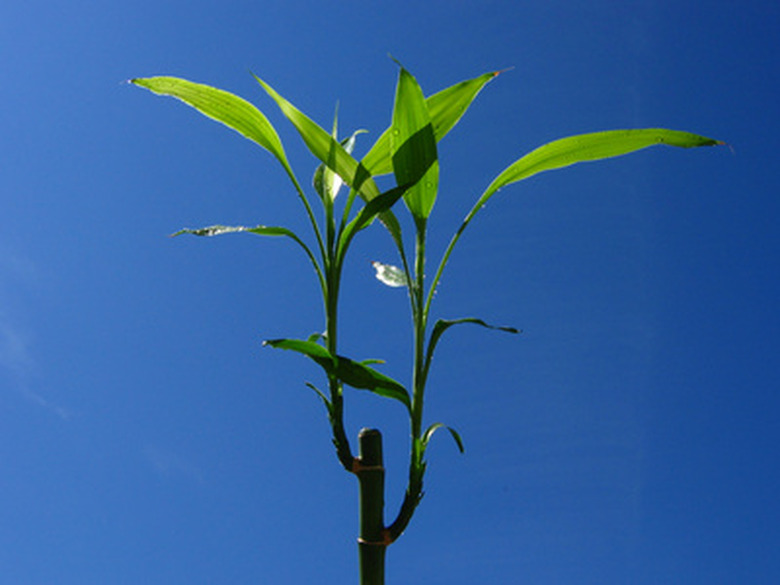Lucky Bamboo Mites
Spider mites sicken and kill plants by feeding on the leaves. Mites are prevalent in warm, dry weather and are among the most serious houseplant pests, notes the University of Minnesota. These pests are among the only houseplant pests to target lucky bamboo. Gardeners can choose either a natural or chemical control method to combat spider mite infestations.
Identification
If you look closely at your lucky bamboo to discover a sticky substance on the plant's leaves or thin webs stretching between stalks or leaves, you've found evidence of spider mites. As the mite infestation worsens, lucky bamboo leaves will turn yellow; however, yellowing leaves alone aren't evidence of spider mites. Leaves also turn yellow when the plant receives too much light. With a mite infestation, they turn yellow because the mites eat the leaves, sucking out the nutrients.
- Spider mites sicken and kill plants by feeding on the leaves.
- As the mite infestation worsens, lucky bamboo leaves will turn yellow; however, yellowing leaves alone aren't evidence of spider mites.
Natural Treatment
Fill a bowl with 1 gallon of water and 1/2 tsp. dish soap or hand soap. Immerse the lucky bamboo plant in this solution to give it a soap bath. Then rinse the plant under warm water. Alternately, prepare the same solution but do not immerse your plant. Instead dip a cotton ball in this solution and rub the soapy water over the stems and leaves of your lucky bamboo to kill the mites. Repeat weekly until the mites are gone.
- Fill a bowl with 1 gallon of water and 1/2 tsp.
- Immerse the lucky bamboo plant in this solution to give it a soap bath.
Chemical Treatment
Purchase an insecticide containing bifenthrin, which targets spider mites. Horticultural oils and insecticidal soaps also remove spider mites. Treat the lucky bamboo following the manufacturer's dosage range and application tips depending on the type of chemical treatment you've chosen. Apply every seven to 10 days until you see no evidence of mites.
Prevention
Spray your lucky bamboo with water from a spray bottle to keep the leaves dust free. Mites prefer dry leaves, so regular misting can discourage them from taking up residence in your lucky bamboo.
Warning
Whenever you bring home a new plant, quarantine it for several weeks to ensure it does not have spider mites or other diseases. Mites spread quickly between plants. Keep the new plant in an isolated room and wash your hands after touching or handling it. If you see no signs of mites after two weeks, bring the new plant into your home. It should not infect your lucky bamboo. Do this whenever you introduce new stalks of lucky bamboo into your home, since these can also carry mite infestations.
- Purchase an insecticide containing bifenthrin, which targets spider mites.
- Do this whenever you introduce new stalks of lucky bamboo into your home, since these can also carry mite infestations.
